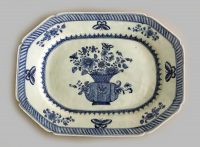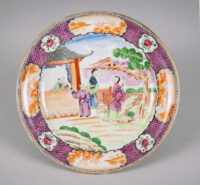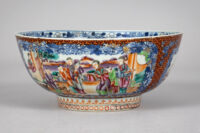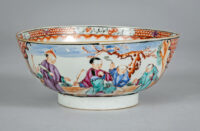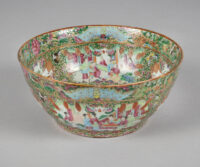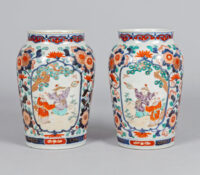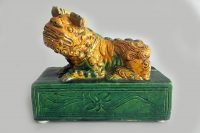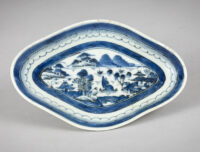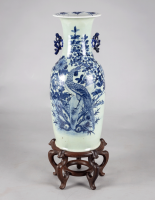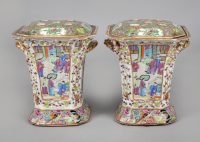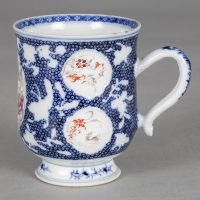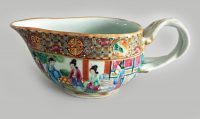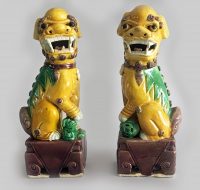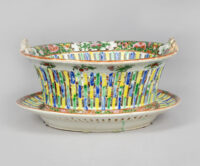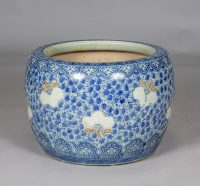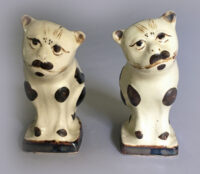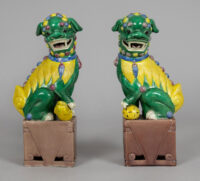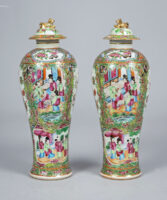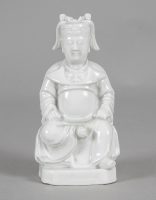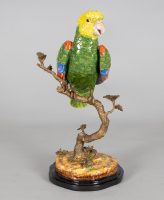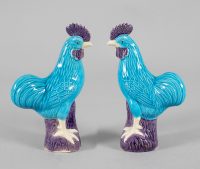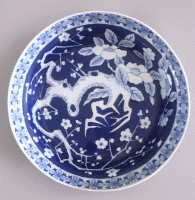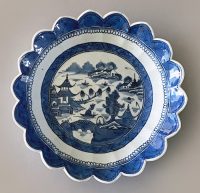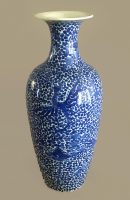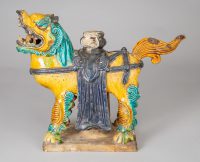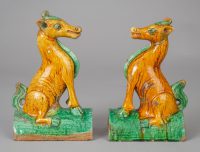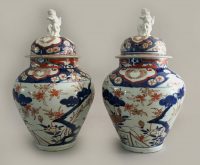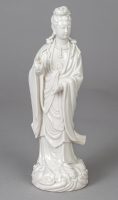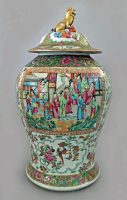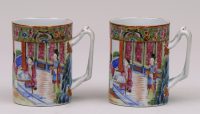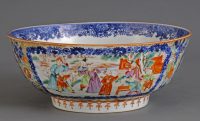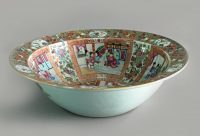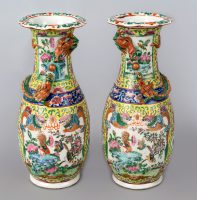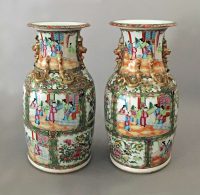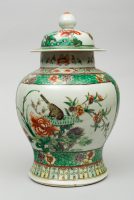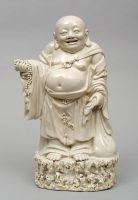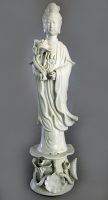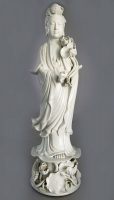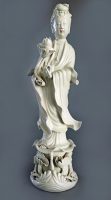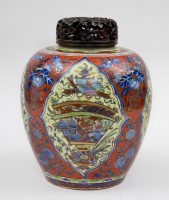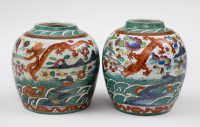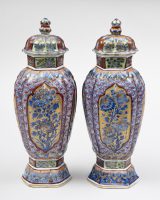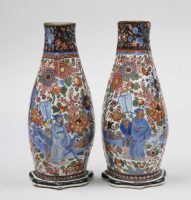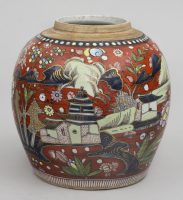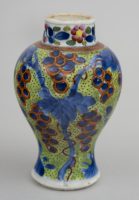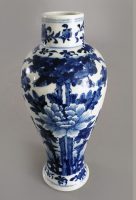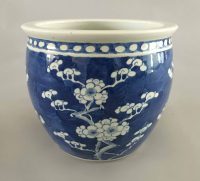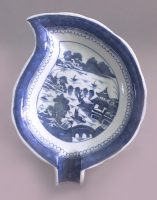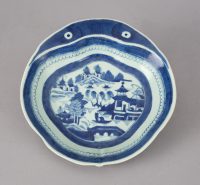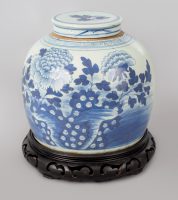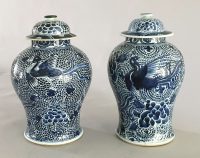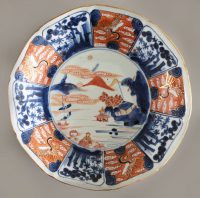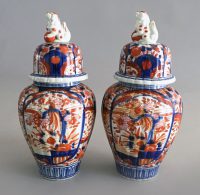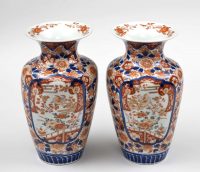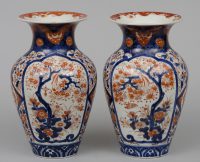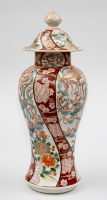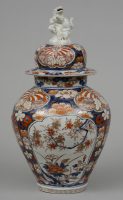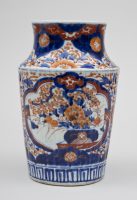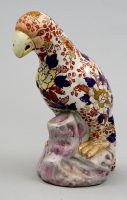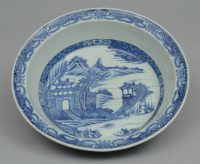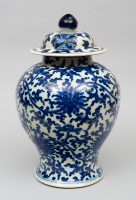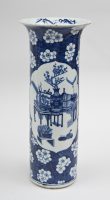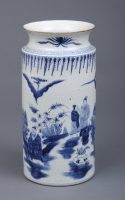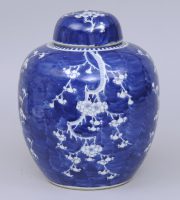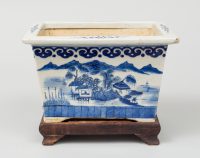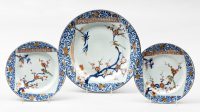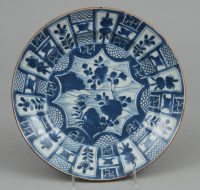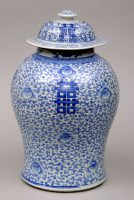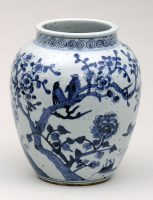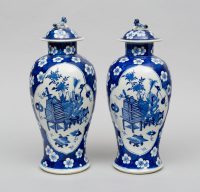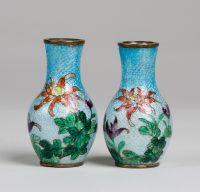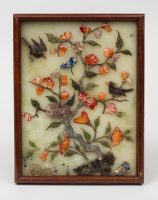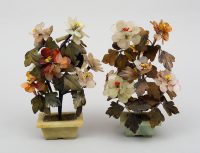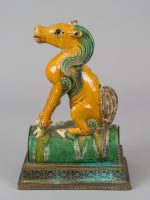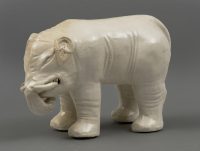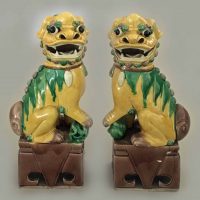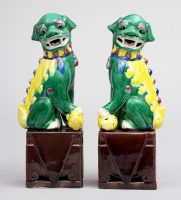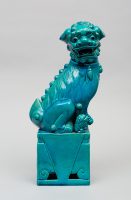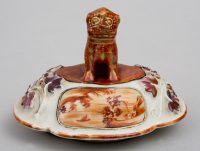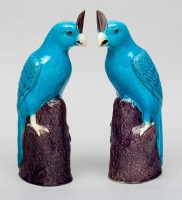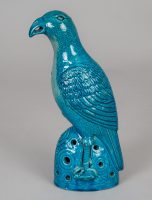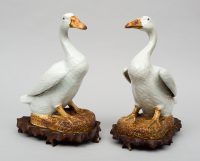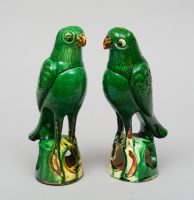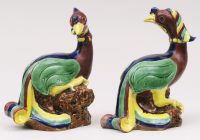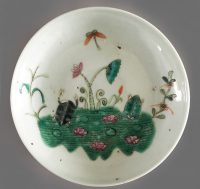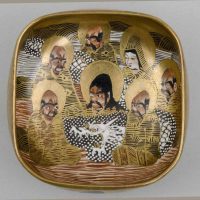Chinese & Japanese View All Ceramics & Glass
Chinese & Japanese Ceramics
Collecting Chinese and Japanese ceramics is fascinating and very much a matter of personal taste. The beauty of porcelain has always been recognized by the Chinese because it is part of their culture and it ranks very high in their esthetic sense. Poets have made reference to its smoothness, its refinement, its dainty qualities, its lightness and musical resonance when tapped. Pottery has been uncovered in China dating back thousands of years and was first made in the Paleolithic period. Porcelain was invented in China during the Han dynasty (206 B.C. – 220 A.D.) in the Zhejiang province and reached its peak in the Ming dynasty (1368-1644). This period is primarily known for the highest quality of porcelain production. Additionally, it is recognized for massive forms, intricate designs, bright colors and especially brilliant blue were.
There were three classifications for Chinese porcelain: those made for the imperial court, those made for the Chinese market and those made for export. Chinese export porcelain is what the western world is most familiar with. The underglaze cobalt blue color we think of when we talk about Chinese porcelain dates from circa 1330 in the Mogul Yuan dynasty (1280-1367), just before the Ming Dynasty (1368 -1643). New kiln techniques were discovered enabling new designs and shapes, color and painted design. Enameled decoration was also perfected during this period. It was also during this period that China began exporting wares around the world starting with the reign of the Wanli Emperor (1572-1620).
This brings to mind the Portuguese Wanli shipwreck of 1625. This ship was loaded with antique blue and white porcelain belonging to the Ming dynasty which was being exported. After a battle with the Dutch the ship sank and wasn’t found until 2006. Most of the ship was destroyed but nine thousand kilos (19,842 pounds) of shards and porcelains were recovered and sold on the open market. This proved to be an important find because it was proof of the forms, styles and types of decoration that were traded in this period. Susan Silver Antiques was able to obtain many pieces from this shipwreck. Kraak ware was one of the types of decoration found on this ship. Kraak is the word the Dutch used for “carrack”, a Portuguese merchant ship. Kraak ware is blue and white decoration designed in radiating panels.
During the Qing dynasty (1664-1912) specially ordered porcelain became popular in America and Europe. Wealthy people and merchants sent portraits, coats of arms and dinner service designs to the Qing potters to be reproduced. These pieces are highly prized today. After 1800, quality declined both in form and decoration.
There are many palettes of enamel colors used mostly in export wares. These are known as “families” by their French names – jaune, noire, rose and verte. Famille verte uses green and iron red with other overglaze colors. Famille jaune uses famille verte enamels on a yellow ground. Famille noire uses a black ground. Famille rose uses mainly pink and purple and remained popular throughout the 18th and 19 centuries. It was also copied by the European factories.
Japanese Porcelain
Japanese porcelain was first made in Japan in the early 1600s in the Arita region where there was a large source of clay. At this time there was an influx of Korean potters who were brought to Japan to build up the ceramic industry and to divulge their knowledge of using refined porcelain techniques. They introduced a new type of kiln to Japan, the “noborigama”, or climbing kiln, which allows for greater precision during firing.
In this section, we are going to discuss three types of porcelain: Arita blue and white, Imari and Kakiemon. Firstly, early Arita ware was crude and heavily potted but by the 17th century it became more refined and the decoration became more complex and employed a brighter blue. Early Imari was probably inspired by underglaze blue porcelain manufactured at kilns in China. During the Edo period (1615-1868) there was a pent up demand for porcelain in the international market. Since this was a period of isolation for Japan because of civil war in China that disrupted trade, the Dutch East India Company persuaded the Japanese to supply them with blue and white wares. This trade continued until the mid-18th century. In order to familiarize Japanese potters with designs wanted in the West, the Dutch would create designs so they could be copied. One such example was a design created by Cornelis Pronk (1691-1759), a Dutch draughtsman and porcelain designer. His most popular design was of a lady with a parasol. These plates are highly sought after.
Secondly, Imari porcelain started out as blue and white ware from Arita, but what separates it from Arita ware is its use of a three-color palette of blue underglaze, rusty reddish-orange overglaze and a brilliant gold. Other colors could also include green, brown and yellow and purple. Because people were tiring of Chinese blue and white in Europe, colorful Imari became very popular. In fact, the Chinese started making Chinese Imari ware to fill a void when Japan suspended overseas trade around 1740. It became so popular that European manufacturers copied the Imari patterns and colors. The English factory of Derby copied the “Japan” style as did other manufacturers. Imari is highly decorative and looks spectacular when several pieces are grouped together on a table, bookcase or mantel. When collecting, always keep quality in mind as some of it can be crudely done.
Lastly, Kakiemon is a style of decoration made in Arita from about 1760 to the early 18th century. It is named after Sakaida Kakiemon, who discovered a new technique for applying enamel decoration to porcelain. It is famed for its distinctive palette of enamel colors. The body is a milky white and is sparsely painted in asymmetrical patterns of subdued red, blue, yellow and turquoise green, emphasizing the white body. Decoration is mostly floral with birds and dragons.
 755 North Main Street, Route 7
755 North Main Street, Route 7